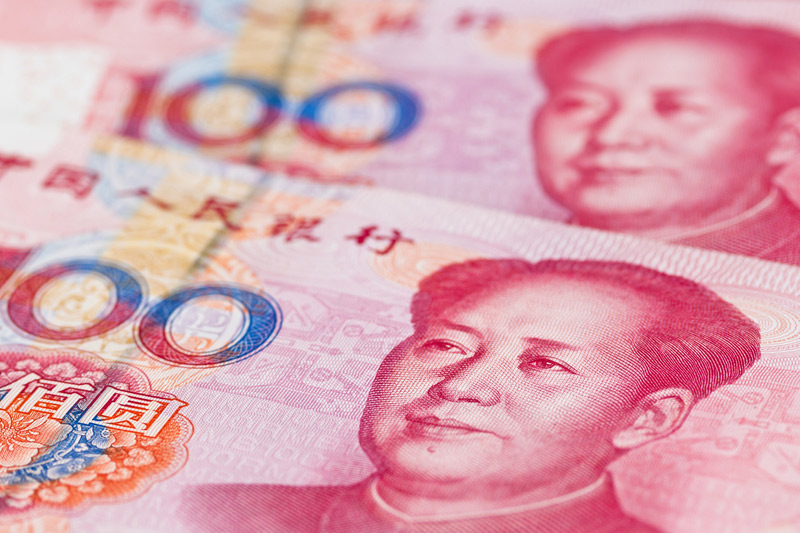Asahi shares mark weekly slide after cyberattack halts production
Investing.com-- The Chinese yuan touched its weakest level in over 17 years on Thursday following six straight days of weaker midpoint fixes from Beijing, as China gears up for a renewed trade war with the United States.
The yuan’s onshore USD/CNY pair- which gauges the amount of yuan required to buy one dollar in local markets- rose as far as 7.3511 yuan- its highest level since late-2007.
The USDCNY pair is closely controlled by the People’s Bank of China, with the central bank setting a daily midpoint around which the pair is allowed to fluctuate.
The yuan’s latest drop came after the People’s Bank of China set a softer midpoint for six consecutive sessions.
Beijing is expected to allow the yuan to depreciate further in order to offset the impact of an escalating U.S.-China trade war. A weaker yuan makes Chinese exports cheaper in foreign markets, and could help stymie the impact of steep U.S. trade tariffs against Beijing.
U.S. President Donald Trump on Wednesday slapped China with an unprecedented 125% tariff, drawing ire and retaliation from Beijing, which had earlier in the day imposed 84% tariffs on U.S. goods.
China was the only major economy slapped with Trump’s so-called reciprocal tariffs, with the U.S. President announcing a 90-day extension for all other targeted countries.
Trump has maintained a largely harsh rhetoric against Beijing, with both sides now showing little intent of backing down. China also vowed to “fight to the end.”
Trump has in the past criticized Beijing’s control of the yuan, claiming that the country is manipulating its currency to gain an edge in global trade.
The new U.S. tariffs are aimed at addressing the country’s massive trade deficit with China. But while increased tariffs are expected to stymie some Chinese imports, U.S. companies and consumers still rely on several critical, irreplaceable goods from China.
Beijing is also dependent on the U.S. as an export market, albeit to a lesser extent than seen in Trump’s first term, when he had also incited a trade war with China.
